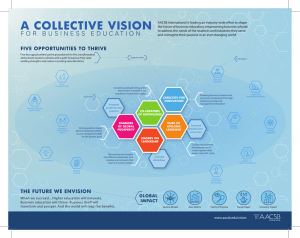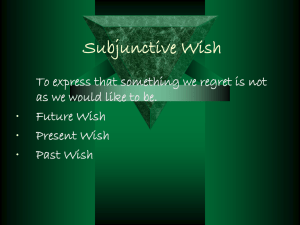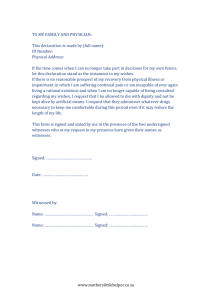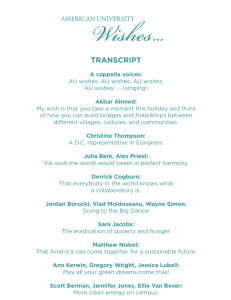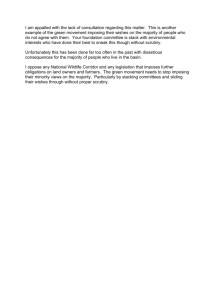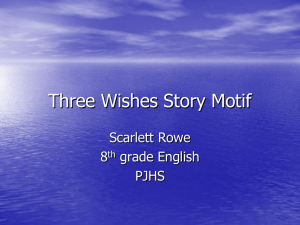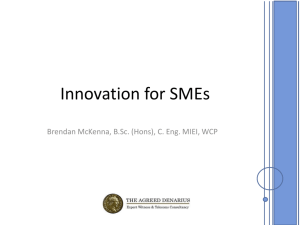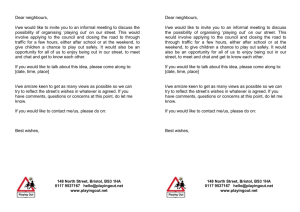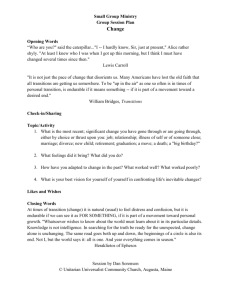Are we facing the same direction?
advertisement
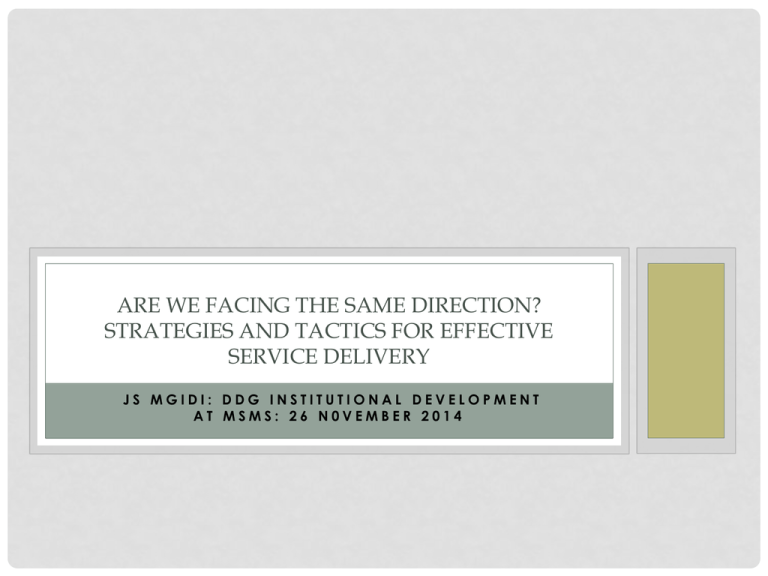
ARE WE FACING THE SAME DIRECTION? STRATEGIES AND TACTICS FOR EFFECTIVE SERVICE DELIVERY JS MGIDI: DDG INSTITUTIONAL DEVELOPMENT AT MSMS: 26 N0VEMBER 2014 INTRODUCTION • The advent of freedom and democratic rule in our country in 1994, Government in 1994, heralded hope and new wishes. It produced new thinking, new expectations, needs and demands on the part of society. In those who experienced freedom and democracy for the first time, it created a sense of ultimate achievement, satisfaction and pleasure. And they were humanly correct to respond in this manner. What did not seem to be an obvious and serious challenge in the earlier years of freedom and democracy was: How all these new human constructs were going to, dynamically and constantly and with the passage of time, mutate themselves into new forms and shapes. INTRODUCTION • Concurrently with all the new developments, new scenarios, opportunities and challenges emerged in various areas including governance, administration, management and leadership. This Summit, being the biggest gathering of SMS members whose mandate it is to translate the wishes, needs and socio- economic, politico-developmental and humanitarian wishes, needs and aspirations of society into concrete programmes and projects, must produce, collectively, new ideas, new ways of thinking and working and new skills and new plans in order to meet new societal expectations. INTRODUCTION • WHAT IS THIS DIRECTION THAT WE ARE TALKING ABOUT AND WHY SHOULD WE ALL FACE THE SAME DIRECTION • THE DIRECTION POINTERS IN OUR CASE INCLUDE 1. Constitution 2. Constitutional creatures 3. Policies of Government SAME DIRECTION • Respect for constitution • Law in particular (PFMA, PSA etc) • Policies and its creatures • Shared vision • Value add (Skills and Knowledge) • Exemplary leadership INTRODUCTION • Alan Ehrenhalt believes that “ When the government has the right people, and the right systems, and the right intentions, many good things are possible. The trick is knowing which ones they are.” WHERE DO WE STAND COLLEAGUES IN RELATION TO THIS POSITION? A we the right fit for the new purpose? Our systems and procedures giving us the results expected by our communities? INTRODUCTION • One of the biggest challenges we face today as administrative leadership is the right match of right solutions to the right challenges. In other words dispelling the notion and tendency of trying to solve today’s problem at the same level of thinking we were at when they were created. COMMON FACTORS FOR SERVICE DELIVERY • Better evidence for better decision making • Greater engagement and empowerment of the people • Investment in skills • Cooperation and partnership CHANGE PRONE AND OPEN MINDEDNESS • The problem we face today Albert Einstein: Definition of sanity is doing the same thing over and over again and expect different results. Leadership: Is about getting results through others Leadership and discipline are essential to performance. Results orientedness If you turn to be more concerned about inputs than results you end up creating work not results The effect is organizational overload bulky wage bill INVEST IN SKILLS Our intellectual capacity enables us to better understand our work environment, determines our destiny (Vision and Mission) makes whatever choices we make towards achieving our objective. This includes deploying appropriate skills, available or developed, that are equal to the task WHAT IS THE LEARNING ORGANIZATION • The following are some of the characteristics of the learning organization: • Ability to continually improve performance through new ideas, knowledge and insights, • Ability to constantly anticipate, innovate and find new and better ways to fulfill its mission, • A tendency to change its behavior to reflect new ideas and insights, WHAT IS THE LEARNING ORGANIZATION • People, their knowledge, know-how and ability to innovate are at the heart of the learning organization, • It recognizes learning as being a collective undertaking involving the exchange of knowledge and ideas among people working together in teams and network, • It encourages managers and employees to identify their own needs, WHAT IS THE LEARNING ORGANIZATION • Provides a regular review of performance and learning for the individual, • Encourage individuals to set challenging learning goals for themselves, • Provides feedback at the time on both performance and achieved learning, • It relies on teams and networks to expand its intellectual capacity, WHAT IS THE LEARNING ORGANIZATION • Reviews the performance of mangers in helping to develop others, • Seeks to provide new experiences from which individual can learn, • Provide and facilitates the use of on-the-job training, • Tolerates some mistakes, provided individuals to try and to learn from them • Encourages individuals to review, conclude and plan learning activities. THANK YOU
